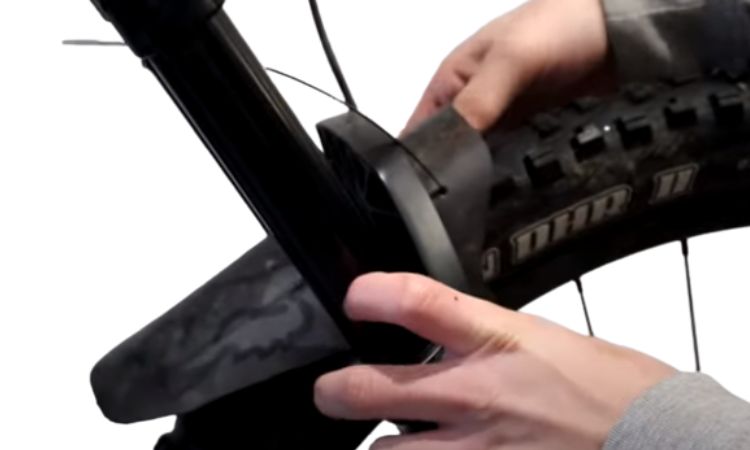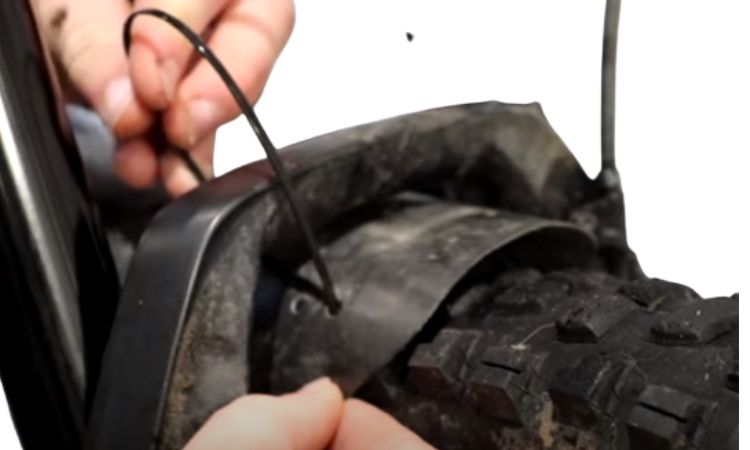Mudguards are a great way to keep your bike clean and dry, and they’re beneficial if you ride in wet or muddy conditions. How To Fit Mudguards To A Hybrid Bike?
One option is to use clip-on mudguards. These attach to your bike frame with clips or velcro and can be removed when not in use. Another option is to use full-coverage mudguards that bolt onto your bike frame. These provide more protection but can be more difficult to install.
Mudguards are essential equipment for any cyclist, but they can be a bit of a pain to install, especially on a hybrid bike. This guide will show you how to fit mudguards to a hybrid bike in just a few simple steps.
Do I need mudguards on my hybrid bike?
Hybrid bikes are an excellent choice for riders who want the best of both worlds – the speed and efficiency of a road bike with the added comfort and stability of a mountain bike.
Mudguards are commonly seen on road bikes but are much less common on hybrids. Hybrids are a cross between road bikes and mountain bikes. Mountain bikes generally don’t have mudguards as they’re not needed when riding off-road.
However, mudguards can be a good idea if you’re planning on using your hybrid bike mainly for commuting or road riding.
Mudguards will help to protect you from the elements and will also help to keep your bike clean. They’re relatively easy to fit, and various styles are available to suit different bikes.
How to fit mudguards to a hybrid bike?
Mudguards, also known as fenders, are essential equipment for any cyclist riding in wet or muddy conditions. They attach to the bike’s frame and help keep the rider clean and dry by deflecting water and mud away from the tires.
Most hybrid bikes come with pre-drilled holes in the frame for attaching mudguards, making them relatively easy to install.
1. Start by attaching the mudguard stays to the bike’s frame. There are usually two stays per mudguard, one at the front and one at the back.

2. Once the stays are in place, you can start attaching the mudguard. Start at the front of the bike and work your way back.
3. Use the zip ties or screws with your mudguards to secure the mudguard.

4. Repeat the process for the other mudguard.

5. That’s it! You’re ready to hit the road or trail with your new mudguards.
How do you fit mudguards to a bike without eyelets?
Mudguards, or fenders, are an essential piece of cycling equipment, especially if you live in an area with a lot of rain or snow. They attach to your bike and help keep you clean and dry by deflecting water and mud away from you and your bike.
Most mudguards require eyelets to be installed, but there are a few ways to install them without eyelets.
Zip ties:
Using zip ties is the simplest and most common way to install mudguards without eyelets. You attach the mudguard to your bike frame using zip ties. This method is not the most secure, so ensure that the mudguard is secure before every ride.
P-clamps:
P-clamps are small metal clamps that you can use to attach mudguards to your bike frame. They are more secure than zip ties but can be more challenging to install.
Hose clamps:
Hose clamps are another option for attaching mudguards to your bike. They are similar to P-clamps but are easier to install and remove.
Mudguard clips:
Mudguard clips are designed specifically for attaching mudguards to bikes without eyelets. They are easy to install and remove and are very secure.
Do mudguards fit all bikes?
Mudguards, or fenders, are a great way to keep yourself and your bike clean when riding in wet or muddy conditions. But do mudguards fit all bikes?
The answer is: no, mudguards do not fit all bikes. There are many types and sizes of bikes, each requiring a different kind of mudguard. The most common type of mudguard is the clip-on mudguard. These mudguards attach to the bike’s frame with clips or straps and are generally quick and easy to install and remove.
However, clip-on mudguards will not fit all bikes. They are typically only compatible with specific frames like road and mountain bikes.
Another type of mudguard is the full-coverage mudguard. These mudguards are larger and cover more of the wheel, providing more protection from the elements.
Full-coverage mudguards are usually made of plastic or metal and attach to the bike’s frame with bolts. They are not as quick and easy to install as clip-on mudguards but will fit a wider range of bike frames.
Conclusion
The most important thing to remember when fitting mudguards to a hybrid bike is to ensure they are the right size for your bike.
Mudguards that are too big or too small can cause problems, so it is worth measuring your bike before you buy them.
Once you have the correct size mudguards, fitting them is relatively straightforward. You will need to use some strong tape or zip ties to attach the mudguards to your bike, and it is worth taking the time to make sure that they are securely attached.
With the mudguards in place, you can enjoy riding your bike in all weather, safe in the knowledge that you will not get muddy!


